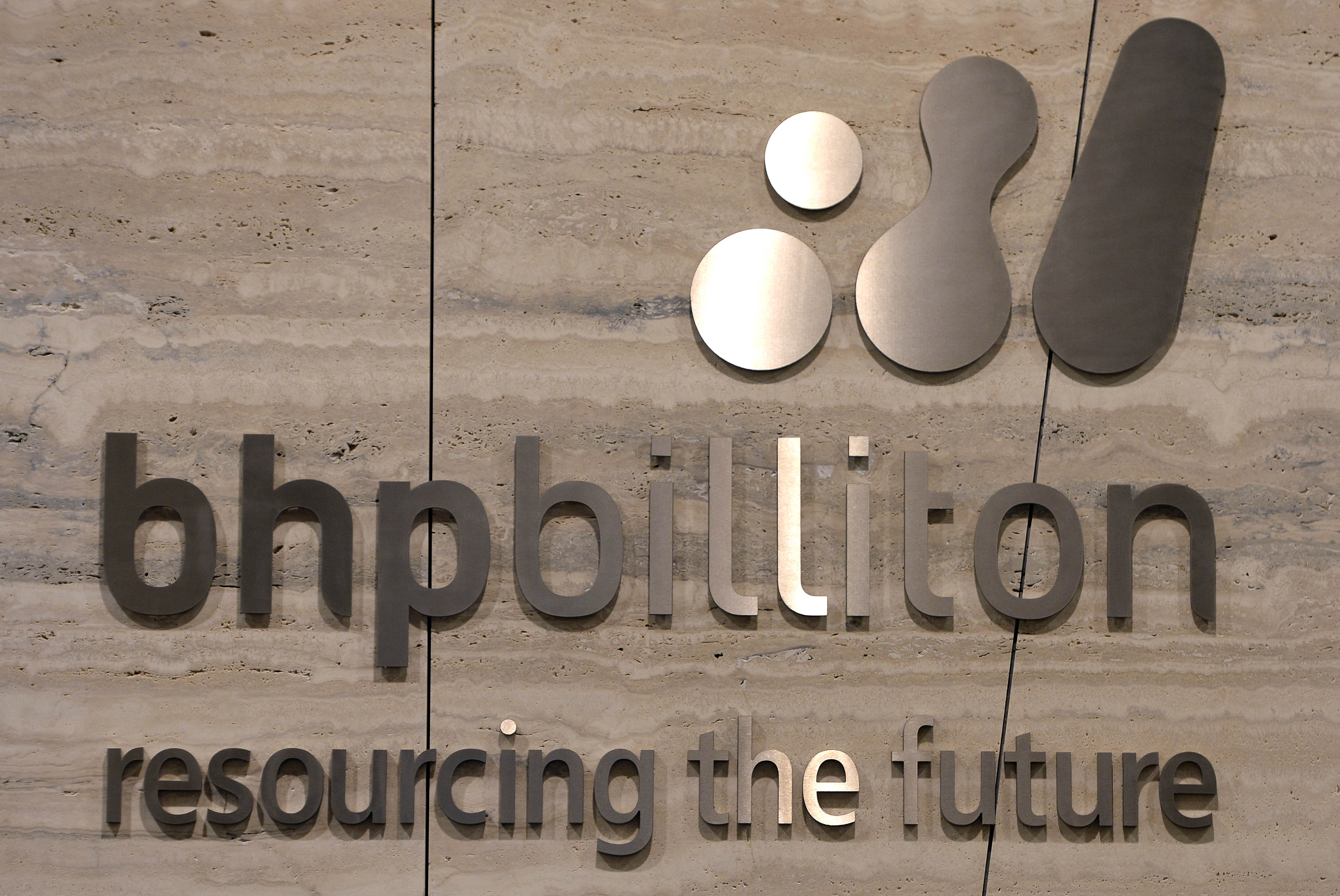
by Glenda KWEK
SYDNEY, Australia (AFP) — BHP Billiton on Tuesday reported an annual net loss of $6.39 billion, its worst-ever result, as the impact of a mine dam disaster in Brazil and weak commodity prices hit the world’s biggest miner.
Mining firms have been battling big price declines in the commodities market, with the outlook uncertain despite a recent improvement in prices.
The results for the year to June 30 followed a $1.91 billion net profit in the previous corresponding period. Underlying earnings, which strip out one-off writedowns, came in at $1.22 billion, slightly above analysts’ expectations.
“The last 12 months have been challenging for both BHP Billiton and the resources industry,” chief executive Andrew Mackenzie said in a statement.
“Nevertheless, our results demonstrate the resilience of our portfolio and the diverse ways in which we can create value for shareholders despite low commodity prices.”
BHP said its losses included a $4.9 billion writedown on the value of its struggling onshore US shale oil and gas assets and a $2.2 billion charge relating to the Samarco dam failure.
The annual result is the worst since the merger between Australia’s BHP and British-based Billiton in 2001.
The Anglo-Australian firm declared a final dividend of 14 cents compared to 62 cents last year.
The challenging market outlook saw global ratings agency Standard & Poor’s downgrade BHP’s rating from A+ to A in February.
Mackenzie said despite expectations that commodity prices would “remain low and volatile in the short- to medium-term”, he was confident about the long-term outlook, particularly for oil and copper.
Miners have benefited from China’s hunger for resources amid an economic boom, but weakening growth in demand from the Asian giant in recent years has contributed to the plunge in prices.
Mackenzie told a media conference call that while the outlook for China, the world’s largest commodities consumer, pointed to slowing growth, the size of demand for resources would still be large.
“We would say that the evolution of the Chinese economy is pretty much going to plan. In aggregate, that means that headline growth will taper down — that’s off a very large base now, a $10 trillion economy,” he told reporters.
“That demand that comes from that will still be considerable and support growth in the long-term.”
– Dam investigation –
BHP has also been grappling with the aftermath of the Samarco dam rupture last November in which 19 people died.
Samarco, which is co-owned by Brazilian mining giant Vale, is facing billions of dollars in legal claims for clean-up costs and damages.
Mackenzie said the findings of an investigation into why the dam failed were expected to be released “in the coming weeks”.
BHP, a major player in the US oil and gas industry, added that total petroleum output for the 2017 financial year was expected to fall, after moves by the company to defer developments at its onshore US fields on the back of sharp falls in prices.
Early this month mining giant Rio Tinto reported a 47 percent fall in underlying earnings — investors’ preferred measure — from a year earlier to $1.56 billion in the six months through June. Net profit for Rio more than doubled to $1.71 billion in the six months to June 30 amid cost-cutting measures.
Fat Prophets resources analyst David Lennox said BHP’s underlying result was good given the headwinds facing the sector.
“Underlying profit was ahead of consensus at $1.2 billion on consensus of zero to $1 billion… the balance sheet remains in very good shape at net debt of only $26 billion,” he told AFP.
The company’s share price closed 0.45 percent higher at Aus$20.25, ahead of the results announcement.
South32, which was spun off from BHP last year and which has assets including aluminium, coal, nickel, manganese, silver, lead and zinc, is set to report its earnings on August 25.
© 1994-2016 Agence France-Presse







